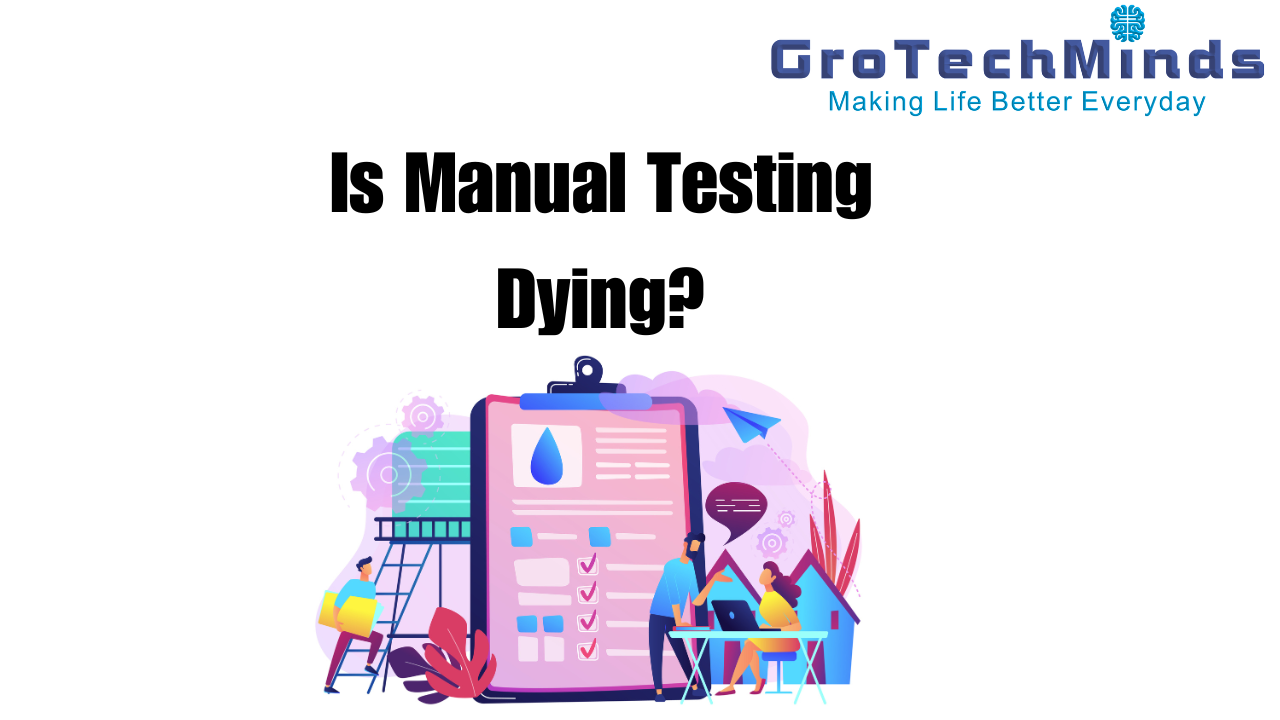Many testers may be wondering, “What is the future of manual testing?” since we will be talking about it in this article. In the software testing communities, this topic was the subject of numerous debates and discussions.
Now, let’s discuss a few points that help us understand these issues and their answers.
We may understand this type of speculative query triggers panic if you are a manual tester. It doesn’t help the cause when organizations/companies adopt it widely, which gives the impression that automation testing will replace manual testing in importance.
Occasionally, the aforementioned ideas are true if we look at the increasing rates of automation testing; nevertheless, in addition to this, we also need to comprehend the benefits and drawbacks of automation testing, as well as how important manual testing is to its drawbacks.
With that understanding in mind, I have the following queries for you:
-
Is it possible to use tools to automatically provide 100% reliable testing?
-
Should businesses phase out manual testing?
-
Is automation testing practical for small projects or businesses in terms of return on investment?
-
Can human behavior be adequately emulated by automation testing?
Let’s examine manual testing.
The initial testing stage that most closely resembles software development is manual testing. It assesses the behavior of the website or application in a methodical manner by using the requirement specification analysis as a basis. Verifying that the project or product operates in accordance with the required specification documents and enhancing the application’s quality are the main goals of manual testing. Example: To prevent failures, find as many flaws as possible before releasing onto the market.
Why is manual testing going to be required forever?
In a few cases, manual testing is the best option. Let’s examine the situations in which using manual testers is preferable to automation.
Whether Automation Testing Is Practical
Manual testing is necessary because 100% automation is not practical. If you wish to generate test data for the purpose of executing the test, this falls under manual testing once more. For these and numerous more reasons, automated testing is unable to handle captcha, two-step verification, etc.
smaller-scale initiatives
It requires a lot of resources to deliver an automated testing solution. Compared to manual testing, automation testing has substantially greater overhead. For smaller projects, manual testing is often the only financially viable choice.
The cost of automation is high.
We are aware that automation testing is impractical for smaller projects, but it can also be a financial burden for smaller businesses. An alternative to the high costs and upkeep associated with automated test methods is manual testing.
Meticulous and extensive testing
In automated testing, predetermined and established procedures are used to assess the system’s behavior and functionality. While the process is significantly faster, minor defects could go undiscovered due to the lack of customization. As an additional safeguard, manual testing is required to get rid of any issues of this kind.
User experience
A machine can never fully simulate human behavior. User experience testing therefore requires manual testers who can imitate these activities and assess the program based on the needs and desires of end users. Manual testing will always be necessary for higher UX. Automation cannot accomplish this level of UX testing unless we spend money on a highly skilled AI system.
What lies ahead?
Changes and improvements in operations are bringing manual testing closer to software development. As long as manual testers continue honing their craft and gaining new tools, they have a promising future.
Developers are often asked QA questions in interviews with startups and organizations. Developers are being required to know a little bit about manual testing by the business. Manual testers must be conversant with development concepts like sorting algorithms since the boundaries between QA and development roles are blurring as agile becomes the standard. However, it is preferred that developers have experience with both functional and unit testing.
Conclusion:
Manual testing in software testing offers the accuracy, clarity, and fine-grained control needed for software testing. It is false to say that manual testing is out of date. Both automated and human testing have benefits. There is little doubt that Testing in manual testing will never completely replace it. For the greatest return on investment, QA testers must combine human and automated testing. This does not imply, however, that manual testers should give up on automation testing; rather, they should concentrate on the tools and technologies that are making their way onto the market and attempt to integrate them, as these will lessen the amount of repetitive work they have to do, saving the company money, time, and other resources!












